Back to basics – through the master's eye
You are continuously trying to improve all the processes on your farm, including the performance of your livestock. You discuss with your vet whether your calves are as healthy as they can be, whether you should vaccinate cows against Rotavirus and Coronavirus in their dry period, or whether you could improve the animals’ housing.
Sometimes, however, it’s good to take a few ‘steps back’ – to go back to the basics and identify and tackle potential problems at an early stage.
Of course, this involves some basic specialist knowledge, like the type your father had: he could see straight away if something was wrong with a calf. He used his master's eye to thoroughly examine the calf.
Every cattle farmer can do this, but sometimes you aren't aware of the origins of this basic knowledge. This basic knowledge is listed below, along with further details.
To recognize a sick calf, you first need to know what a healthy calf should look like and how it should behave.
A healthy calf:
- is inquisitive and alert
- has a shiny coat
- looks clean
- always wants to drink milk (or more milk)
- has stable, regular breathing
- visibly grows every week
- has healthy bowel movements
- has a plump belly
The most important factors to take into account are a calf's activity and alertness, the structure and colour of its faeces, its coat, its breathing, and if it is showing signs of pain. If these factors are positive, the calf is generally in good health.
In contrast, a sick calf may show one or more of the following symptoms:
Activity and alertness
- Lethargic
- Droopy ears
- Significant time spent lying down
- Little or no feed or water intake
- Separating itself from the group
Structure and colour of faeces
- Discoloration of faeces
- Diarrhoea
- Blood in faeces
- Mucus in faeces
Coat
- Soiling itself
- Dull coat
- Long, upright hairs
- Scratching behind its ears with its hind legs
Breathing
- Irregular breathing
- ‘Rattling’ in breathing (pulmonary infection)
- Runny nose
- Coughing
Pain
- Arched back
- Head tilt
- Lameness
These symptoms indicate that a calf is not entirely healthy, while the nature of symptoms will indicate the possible causes of the disease. Symptoms associated with breathing, for example, have a completely different cause from diarrhoea symptoms.
If you can determine the cause based on these symptoms, you can start the appropriate treatment more quickly in order to get the calf back on its feet as soon as possible.
In summary, the most important basic skills in successful calf rearing are the ability to identify what a healthy calf should look like, any changes in normal calf behaviour, and the causes of any problems (based on symptoms), and to start the appropriate treatment as quickly as possible.
If you have mastered these basic skills, you can avoid many problems and will not have to resort as quickly to other measures such as the use of antibiotics and vaccinating cows in their dry period.

Share this message

Agros Expo 2022
On January 25-27, Moscow will host the Agros Expo 2022 international exhibition of animal husbandry, breeding and forage production. We invite you to familiarize yourself with our bestsellers - Comfort and Open Top Premium calf hutches! Booth K36,...
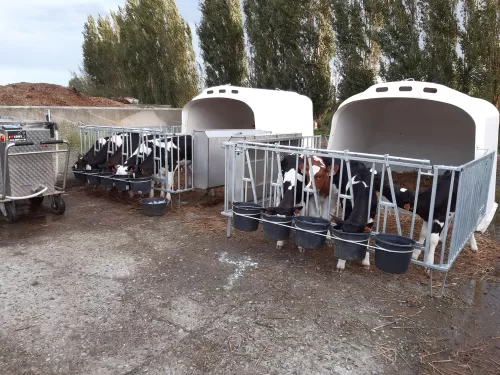
In conversation with...
Filip and Anja from dairy farm De Brabander LV Filip (49) and Anja (47) De Brabander-Vandierendonck have enjoyed running a dairy farm with 260 dairy cows together in the municipality of Zomergem (Lievegem) Belgium for the past 27 years....
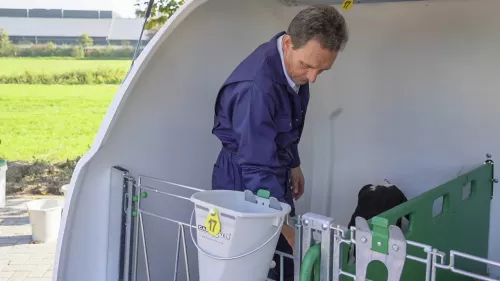
Reduce labour by up to 20% in the first four months
Investments in practical housing pay off. Calf rearing is a labour-intensive part of running a dairy farm. Proper calf rearing requires attention and care. Yet at many farms, it's possible to greatly reduce the amount of work. Labour savings...
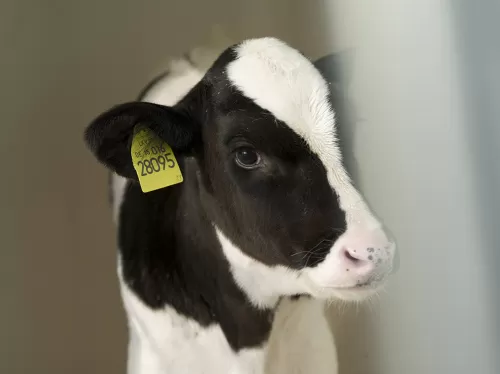
More growth and health in outdoor housing
Thorough calf rearing is essential for a good performance as a dairy cow. With a high feeding regime and an all-in, all-out housing in small, fixed groups, calves perform best. This according to research by the Dutch Dairy Campus/WUR with 224...
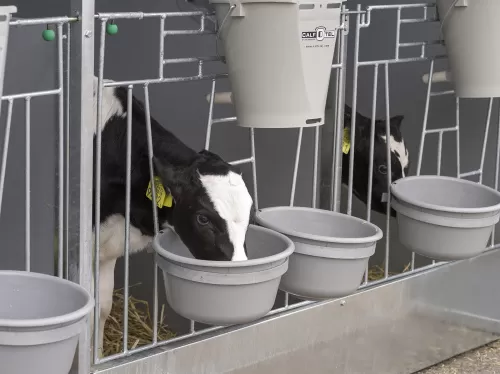
More attention for calf housing
In recent years, more and more attention has been paid to how calves are fed. This is not surprising, considering that the care given to young calves will determine their performance as dairy cows in the future. Research has shown that intensive rearing...

Plastic versus Polyester
Choice of materials determines lifespan. Calf hutches made from plastic or polyester: What will you choose? At first glance, they might seem similar. Yet there is a world of difference. Arjan Harbers, Sales Manager at VDK Agri,...

VDK Agri Open Top Premium wins Innov’SPACE!
VDK Agri has won a 2020 Innov’SPACE for the Open Top Premium Single and Duo! Our colleague Jean Bernard Béranger received the award yesterday.
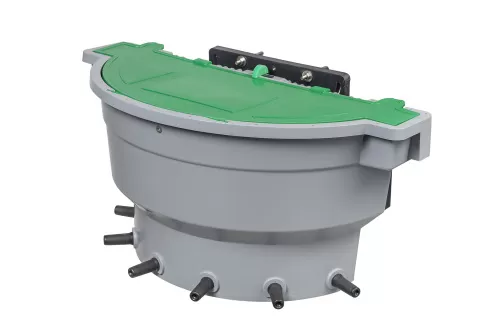
New products!
VDK Agri launches not one but three new products, among which a new line for indoor accommodation. These calf pens are suitable for dairy farmers who want to keep calves indoors or under a roof. The products were developed on the basis of the latest...
